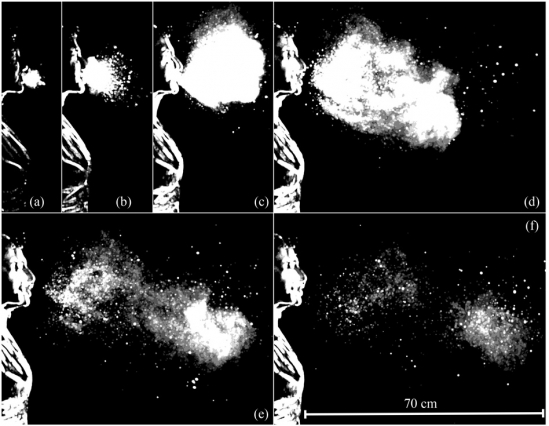Studying the Science of 100 Sneezes
-
-
slice.mit.edu
- 1
Filed Under
Recommended

Winter in New England can be described in many ways, including the unhealthy moniker “cold season.” So it makes sense that a recent-released MIT study focuses on a potent virus-causing agent: the sneeze.
MIT’s Fluid Dynamics Lab used two high-speed cameras to capture 100 sneezes from 100 healthy volunteer subjects. In the video, when slowed down to fractions of a second, researchers were able to pinpoint the precise moment when fluid is ejected from the mouth to the air. (According to MIT News, a full “sneeze event” lasts less than 200 milliseconds.)
Assistant Professor Lydia Bourouiba told MIT News that studying sneezes can help researchers better understand how infections can spread throughout an environment. “It’s important to understand how the process of fluid breakup, or fluid fragmentation, happens,” she says. “What is the physics of the breakup telling us in terms of droplet size distribution, and the resulting prediction of the downstream range of contamination?”
“MIT scientists filmed 100 sneezes to learn how people spray differently,” Tech InsiderThe findings, “Visualization of sneeze ejecta: steps of fluid fragmentation leading to respiratory droplets,” were published in the journal Experimental Fluids. In addition to Bourouiba, the report was also authored Professor John Bush; Associate Professor Alexandra Techet SM ’98, PhD ’01; and Barry Scharfman SM ’12, PhD ’16.“Here's what they saw: Each panel in the photo captures a different, discrete moment during the sneeze event. For the first few milliseconds, the sneeze explodes as a great cloud of saliva and mucous. Almost immediately, however, the cloud collapses into millions of tiny droplets that disperse into the surrounding air, finally settling on the ground below.”
The recent report was not the first scientific sneeze study conducted by Bourouiba and Bush. In 2014, they determined that sneezes (and coughs) have associated gas clouds that can spread infection much further than previously deduced. That paper was co-written by Eline Dehandschoewercker, a visiting MIT student supported by the MIT-France program.
MIT’s Fluid Dynamics Laboratory, housed within the Department of Mathematics, is directed by Bush. According to its website, at least 14 MIT alumni and at least four post-doctoral researchers have been involved in the lab.








Comments
Alice
Fri, 02/26/2016 2:10pm
I hope this doesn't get posted, but I couldn't quickly find your email and I have a semi-rhetorical question: who is the editor that let "a recent-released MIT study" stand unchallenged? It should say "a recently released MIT study." You have a really well done post, except for that one 'grammar gremlin.'